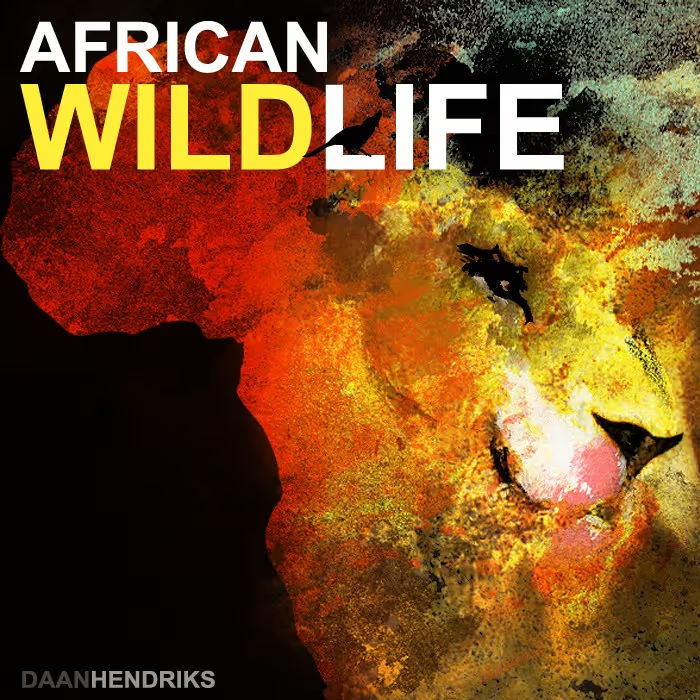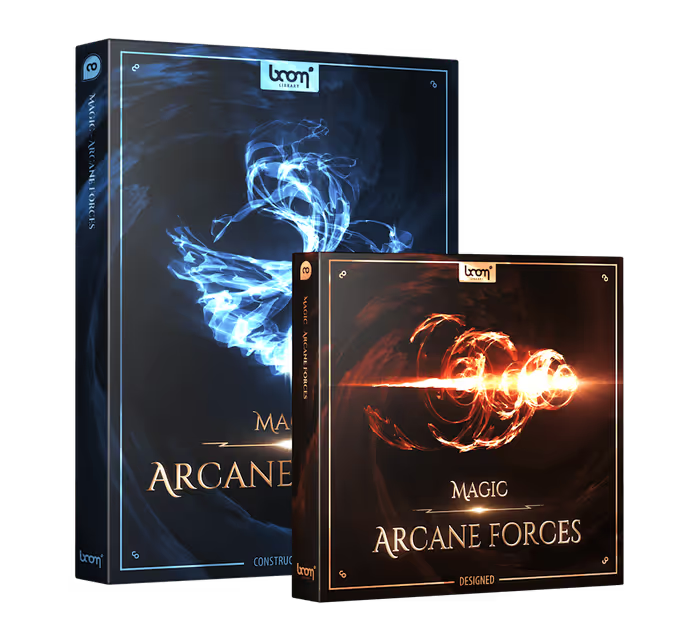Written by Jennifer Walden, images courtesy of Paramount Pictures and Jan Thijs. May contain spoilers
Update: Arrival is now a 2017 Oscar-winner for Best Sound Editing, and a 2017 BAFTA-winner for Best Sound – big congrats to the team!
Communication is challenging, whether two beings speak the same language or not. That’s the message behind director Denis Villeneuve’s latest release Arrival, in theaters now. The story follows linguist Dr. Louise Banks (Amy Adams) who is contacted by the Army to help decipher communications from a race of aliens that have landed on the planet. As she struggles to understand the aliens, she is also struggling to reach a level of understanding with her own kind.
Director Villeneuve tapped award-winning supervising sound editor Sylvain Bellemare in Montréal to lead the post sound team. Villeneuve and Bellemare have worked on several films together, including the Oscar-nominated film Incendies. At this point, they’re very good at communicating their creative ideas to each other. Here, Bellemare and supervising re-recording mixer Bernard Gariépy Strobl share their reality-based approach to designing and mixing the sci-fi film Arrival.
How did you get involved with the film?
 Sylvain Bellemare (SB): I’ve known Denis for a long time. We’ve done a few films together since the 1990s. He’s an old friend from the film industry in Montréal. Even if we don’t see each other much during the year, Denis and I have a close relationship. We do not need to talk much to understand each other, and laughter is always there around the corner!
Sylvain Bellemare (SB): I’ve known Denis for a long time. We’ve done a few films together since the 1990s. He’s an old friend from the film industry in Montréal. Even if we don’t see each other much during the year, Denis and I have a close relationship. We do not need to talk much to understand each other, and laughter is always there around the corner!
 Bernard Gariépy Strobl (BGS): I think it’s safe to say that the strongest link between the sound team and director Denis Villeneuve is Sylvain. He and Denis are old friends.
Bernard Gariépy Strobl (BGS): I think it’s safe to say that the strongest link between the sound team and director Denis Villeneuve is Sylvain. He and Denis are old friends.
Personally, I first met Denis as a recordist on Cosmos, one of the first films in which Denis participated. Twelve years later I mixed his great short film Next Floor. Through the years, Sylvain and I made a good sound team, working together many times. More recently, Denis reached out to me to mix Sicario (if it had to be mixed in Montreal), but it was my colleague Luc Boudrias who ended up doing a great job temp mixing it. When Denis looked in Montréal to find a sound team, it made sense to bring us together.
What were some of the director’s initial concerns for sound?
Denis always likes to have a precise sound, to have precise IDs for sound. At the same time, he doesn’t want the sound to overwhelm the image.
We’re working with a very subtle line between bringing a language with sound, and then having the audience feel the sound as they feel the film
So we’re working with a very subtle line between bringing a language with sound, and then having the audience feel the sound as they feel the film. It’s a very fine line. You want to make it very expressive but at the same time very subtle. The main idea was to be with Louise all the time. Even if we are in a sci-fi film surrounded by giant aliens, we follow a single woman, very close to her emotion, and she’s lack the capability to communicate. The sound had to represent a mental vision of what is happening inside her mind.
BGS: Denis wanted the sound to stay natural. It had to be more moving than technically sophisticated.
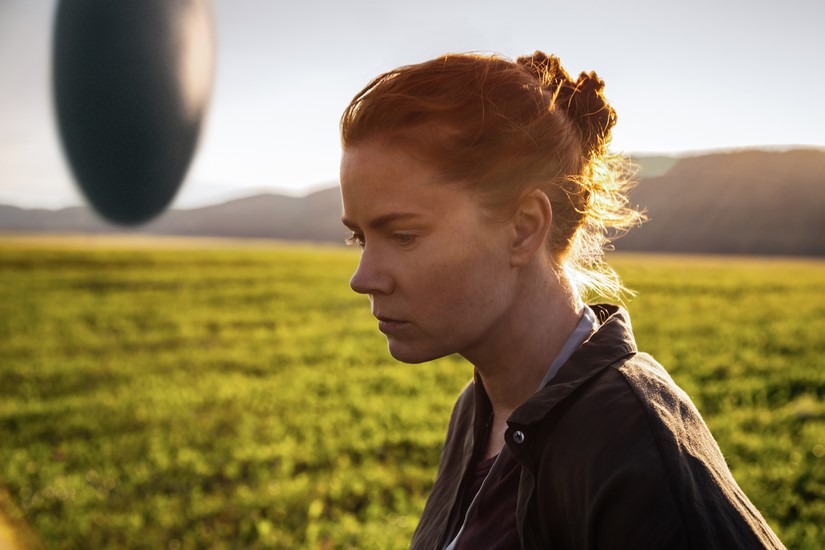
Were there any scenes where director Villeneuve wanted to rely on sound specifically to tell the story?
SB: At the beginning of the film, we realize the arrival of the aliens on earth, and the media starts freaking out. Denis really showed the connection we have today of immediate feedback of news broadcasting on the TV and the web. Everything is connected very fast and everybody gets news at the same time. The information is coming in from all over the place. So, in the first scene the teacher, our main character Dr. Louise Banks (Amy Adams), is teaching her class and at that moment the students receive information on their smart phones. The teacher turns on the TV to see the broadcast coming from different channels. All of a sudden, the reactions start. You have the alarms in the school, and the crowds growing bigger. The teacher leaves the school and she’s surrounded by different alarm sounds, horns and army jets passing.
There is no feeling of it being another world. It’s the real world with extraterrestrials coming in
You have a rush of sounds as she’s leaving but when she arrives at her home (which is located on a huge lake) there is silence surrounding her. After that great rush of sound, the silence seems very quiet but in fact it’s very stressful. That’s because she’s alone at her home but what’s going to happen next? You have eight alien vessels that landed on earth without a sign of doing anything. So the mood is very stressful. The silence continues when she’s coming back alone from the university. It’s a dead silence until Colonel Weber arrives. The army has come into her life and she immediately reject them. That will be one quest in the film— Louise against the army.
Don’t miss this great, in-depth feature on the sound for Arrival – thanks to Dave Whitehead for highlighting this:
https://www.youtube.com/watch?v=HUKub_NECQs
I think Denis wanted to do a sci-fi film that is based in reality. There is no feeling of it being another world. It’s the real world with extraterrestrials coming in. Sometimes in science fiction films you can’t play with that reality. You want the character to remain in reality, and to be totally astonished by what is happening. What’s going to be the real reaction if aliens arrive on Earth today? In film, it’s as if people act like it’s normal. Denis wanted Louise to be stressed for the main part of the film, to be stressed out by dealing with those extraterrestrials and by dealing with the army, while she finds a certain calm with her daughter.
BGS: Denis was particularly attentive to the scene where Colonel Webber (Forest Whitaker) comes to pick-up Louise. He wanted the idea of an alien spaceship arriving to blend with this huge helicopter coming to pick her up. In general, Denis and Joe Walker (picture editor) created a lot of room for sound in the film. It’s often through the edit that we dive in and out of flashbacks, using sounds to link the souvenirs to the present or vice versa as it often happens in real life. Both Denis and Joe have a good understanding of how sound can play a role in a film and this was a great help to a sound team!
[tweet_box]Creating The Poetic Sci-Fi Sound Of Arrival[/tweet_box]
How has the sound of sci-fi films evolved over the years? What were some of your aspirations for the sci-fi sounds on Arrival?
As for how sci-fi films have evolved, I think that Gravity has marked a new era. Forget about any electronic approach to sound in sci-fi films. If you go back to Star Wars in the 1970s, or even the Star Wars today because it’s based in the same universe, everything has to have sound. So, all of the craft, the planes, the vessels, the huge space battle with the Death Star…. when you compare that to Gravity, which is a sci-fi film with a component of reality, they really worked to make the sound as close to reality as possible, of what would really be the reaction in space.
If you go back to Star Wars in the 1970s, or even the Star Wars today because it’s based in the same universe, everything has to have sound
In Arrival, we are much more in a sci-fi film than Gravity. Still we tried to get away from an electronic sound. We wanted to be closer to real sound, to have an organic sound that we could transform and make fit the image and fit the story. I knew that on Arrival I didn’t want to go in a direction that was electronic, but more organic. Although, I’m not a big fan of the word ‘organic.’ The definition is floating somewhere between natural and organic I would say. At the end, the Heptapodes are deeply alive; they are really not robots.
BGS: The aspiration for Arrival had less to do with sci-fi and more with poetry. It is not your typical sci-fi film. This said, I think that sci-fi films in the last years are trying to make us believe that these stories could actually be happening around us by setting them in environments that we can relate to. Take Under the Skin, we are in a very natural everyday van, driving around a normal suburb. Or Ex Machina, we’re in a compound that we can imagine to exist amongst very rich people, with a robot that had a voice lightly transformed to stay emotional and very soft robotic sound so to keep its sensuality. Interstellar’s settings are in a good old corn field, in an old house, and an old pickup truck. These decisions make those stories a lot more real to us. Even Gravity, aimed at staying realistic by putting us in the spacesuits and avoiding big fiery explosions.
The idea was to use more natural rather than electronic sounds to emphasize the contrast between our technology and the mysterious one that brought those visitors
I think that Arrival is in tune with this approach. The big helicopters are very noisy; the jets are heart-stopping loud. When Louise is out on her own in the field with the shell (the alien vessel) in the background, we only hear wind in the grass. The lift that the Army uses to get into the opening of the shell is this everyday hydraulic sound that links us to tools we know. When the shell is moving, it’s not clear if we are hearing the ground shaking or the vessel itself. The idea was to use more natural rather than electronic sounds to emphasize the contrast between our technology and the mysterious one that brought those visitors.
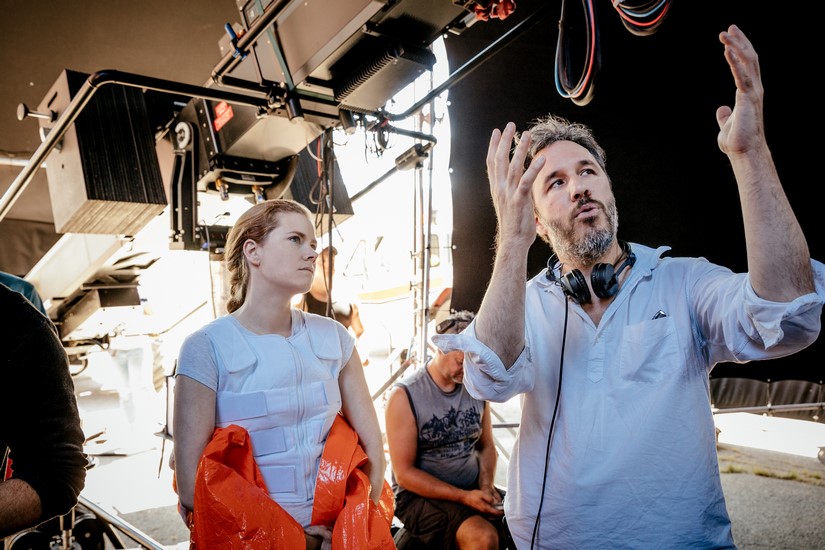
On the set of Arrival with Amy Adams and director Denis Villeneuve
For the military tech, were you able to record sounds at military bases or airports, or did you rely mainly on sound libraries?
SB: Since we came onto the project really late, we had to rely a lot on sound libraries. We did some sound recording but mainly for the alien tech. A lot of the military sounds came from Alan Murray, who is one of the top sound designers/supervisors in Hollywood right now. Alan was a big resource for us, so I was very happy for his help. Remember that that the entire design and mix was done in 4 months – usually it can easily take 10 months.
What was your approach to the alien tech in the film? How did you create those sounds?
SB: The alien vessels were made mainly of rock. All this creation came on the shoulders of Oliver Calvert, the heptapod shell sound designer. Olivier is a master in the field of animated movies. He won many awards around the world for his sound design. He was the perfect designer for the shell. Oliver and I also share our studio in Montréal. We relied on sound libraries for sounds of earthquakes and ice. And then for the logograms — the writing that the aliens use to communicate their thoughts, it’s almost like an ink that splats across this glass. The movement of that ink, the sound for that, was designed-recorded in Paris during the Foley session with Nicolas Becker, the Foley artist. Nicolas is behind the Foley of Gravity and Ex-Machina, so we basically have a star with us. He is really an artist.
I have a great link with Paris. I work in Paris often so I was able to do some stuff there. We basically played with vegetables that we put in water, and also rice. Then we worked with plastic boards. We took metal brushes and scratched them across the plastic board. And we had other water sounds. All of those sounds were combined and treated and that’s how we made the logograms. So the logograms were made from our own recordings and the sounds of the vessels were from elements found in sound libraries.
Handling the logograms was Mimi Allard, our special effects editor who did an enormous amount of work putting together the design with those little pieces of sound.
 Tesla Model X 2015 electric full size crossover SUV sport utility vehicleKrampfstadt Studio65,00 $0,00 $100% OFF
Tesla Model X 2015 electric full size crossover SUV sport utility vehicleKrampfstadt Studio65,00 $0,00 $100% OFF
How did you handle the alien vocals for the film?
SB: All the alien vocals were started before I came onto the film, by a fantastic guy named Dave Whitehead, and his partner Michelle who live in Wellington, New Zealand. Dave has worked on many Peter Jackson films, like The Hobbit films and The Lord of the Rings films (and he did alien vocal work on District 9, directed by Neill Blomkamp), so he has a lot of experience with sci-fi/fantasy films. Dave and Michelle worked with different animal sounds like how Spielberg used animal voices in Jurassic Park to create the sounds of the dinosaurs.
Part of the sound of the alien vocals was coming from a flute that the Māori use
So Dave and Michelle used the same approach, using a lot of camel sounds, pigs, Dave’s own voice — there’s good low-end to his voice which he enhanced with pitching of course. He also used different instruments native to New Zealand. So part of the sound of the alien vocals was coming from a flute that the Māori use. There are also sounds of birds that are indigenous to New Zealand. The approach for the sound of the aliens was very classic in a way. Dave and Michelle are super talented. The heptapods vocals are a hit!
A behind-the-scenes interview with Amy Adams
Throughout the film, there are communication issues amongst the humans, and between the aliens and the humans…
SB: The scientists are not able to communicate with the aliens through their vocals. They decided to communicate through writing, and Louise is able to understand that way, and not through the vocals. They can communicate through writing, although it takes months before they’re able to understand a word. It’s all about describing a language they don’t understand. So the logograms are a way they can understand each other. The first time she’s able to get a piece of language from them is physically. The moment when she takes off her hazmat suit, going against the army’s orders, she motherly puts her hand on the glass board. She literally makes “hand contact,” almost sensual where something will literally come into her mind. That is slightly represented by probably the only non-natural-organic sound — a sort of classic high frequency electro-acoustic tone. The heptapod “injects” the language into her. This first bit of immersion-injection leads to the essence of the heptapod, and she will keep that to herself. You have Louise’s paradox: she’s close to her emotions but too distant to communicate them.
Did you capture any field recordings?
SB: The biggest field recording that we did wasn’t really in the field. It was in the studio. We re-recorded all the dialogue coming through the communication devices. There are all different levels of communication, from the base to the soldiers, from the ship to the helicopters, and things like that. But the communication is always broken. It’s hard from people to communicate with each other. And that is really an overarching theme; that it’s difficult for people to communicate.
The biggest field recording that we did wasn’t really in the field. It was in the studio
They don’t understand each other. They can’t really say what they want to say. And this is the same with Louise’s daughter, which she has a flashback to. And it’s the same with Louise’s partner, Ian Donnelly (Jeremy Renner). There’s all this lack of communication. So in terms of recording, we took every line of dialogue that passes through a communication device in the film and re-recorded that in the studio.
We set up a full range speaker to play the lines out of and had separate devices that picked up that sound and transmitted it to different receivers. The sound playing out of the receivers was then captured by a mic and recorded into Pro Tools (for example, recording the sound that’s being played through a baby monitor). So instead of using plug-ins to achieve this result, like Audio Ease’s Speakerphone, or using EQ, we achieved the processing in a very natural way. It was a bit of a challenge because there were thousands of lines to record in this way.
BGS: I was part of the communication recording setup; that was very cool. There was going to be many different communication colors that we needed to differentiate, like team to base camp, team to team, lots of computers, TVs, and PAs. Sylvain and I didn’t want to rely on plug-ins as they often end up sounding similar. Sylvain, teamed with Mathieu Beaudin (sound effects editor) and effects recording engineer Patrick Rioux, and I came up with a whole bunch of devices through which they recorded all the dialogue lines that had to be filtered. Some lines were recorded through multiple devices to have options at the mix. But as we all know, the dialogue in a film is not over until the film is completely finished, so we had to prepare for dialogue replacement during the mix that would need to match the sound of the devices that we recorded.
We sampled noise and an impulse response of every device used
For this, we sampled noise and an impulse response of every device used. A clean and filtered dialogue line was kept aside as a guide. I then used this to create a plug-in version of each device using all sorts of tools. This indeed came in handy and allowed us to quickly change lines without having to go back to the recording setup.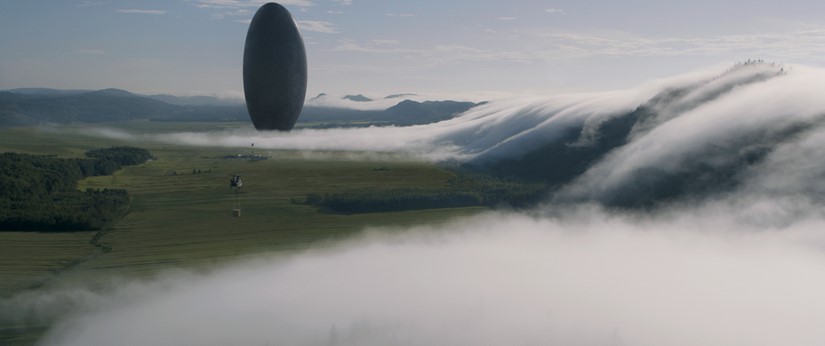
Did you have a favorite scene to design?
SB: My favorite scene to design was the helicopter scene when the helicopter arrives at Louise’s house, to pick her up and bring her to the Army base. That was an enormous challenge because Denis had this reference of Apocalypse Now. When the helicopter is starting it’s this beast, like the nightmare of Captain Willard. It’s the same idea, that this helicopter in Arrival was the door to the evil side of that moment. In fact, Louise later realizes that the aliens are friends and that the real enemy is the Army. All through the film she fights with the Army to get a different approach to the aliens. At the end of the day, the Army is what is in her way, and not the aliens. So the helicopter scene was really powerful.
The sound of the helicopter becomes very spacey inside the score by Jóhann Jóhannsson
It was exciting because the helicopter comes over her house and it doesn’t really sound like a helicopter. Denis wanted the helicopter to sound like a ship from another world for few seconds before the sound of the helicopter becomes real. Then all of a sudden the helicopter is in her garden, to take her to the military base. The sound of the helicopter is really loud, really present with a non-rhythmic beat. The communication in that moment is really complicated. There’s a conversation between her and Ian Donnelly in the helicopter about how they’re going to deal with that. And then we see the helicopter fly over a big crowd of people that are gathered close to the alien vessel. As the helicopter flies over, we hear a bit of the crowd and a bit of communication and then music comes in. Then, the sound of the helicopter becomes very spacey inside the score by Jóhann Jóhannsson. As we get closer to the military base, the sounds become more abstract, with more distortion and feedback, and the helicopter sound is boomy. Then the helicopter lands and we are back to the stressful army vibe of a lean, intense camp. I really love that scene, the way we did it. It’s also a beautiful scene in the way that it was shot. This scene totally captured an essential essence of the film: we are in a trippy film in a way, with a feeling of ecstasy surrounding us, between oblivion and mood. Behind the story, Joe Walker, the editor, and Denis have installed a cosmic vibe. And I hope the sound was able to follow that vibe.
The Arrival sound team won a BAFTA for Best sound – here’s Sylvain Bellemare, Claude La Haye and Bernard Gariépy Strobl collecting the award for Sound for their work on Arrival:
How did you manipulate the helicopter sounds to fit into the music?
SB: First of all, this is my favorite section of Johan Johansson music in the film. And that was a challenge because the score was in the same frequency range as the helicopter.
We had to change the harmonic and the pitch of the helicopter to make it pass through the music. That wasn’t easy to do because the sound still needed to be recognizable as a helicopter
We had to change the harmonic and the pitch of the helicopter to make it pass through the music. That wasn’t easy to do because the sound still needed to be recognizable as a helicopter. The music and the helicopter were in the same frequency range and so we really had to work it in there.
Want to learn more about composer Johan Johansson’s score for the film? In this episode of the Soundworks Collection podcast, Johannson shares the story behind the score:
And in this interesting episode of Song Exploder, he breaks down a piece from the score called Heptapod B:
Did you have a favorite single sound to design?
SB: For a single sound, I would say the rocks were beautiful. Olivier took the rocks and reversed some sounds, processed , pitched and layered that with other rock sounds. We used impacts and echoes. It was really fun to play with that sound. I like the idea that the alien vessels don’t have an engine sound. So those vessels move without any engine or motor or electronics. It was just the sound of the rocks, like a mountain that was moving. This is exactly in the overall design: organic, real inside a metaphysic story.
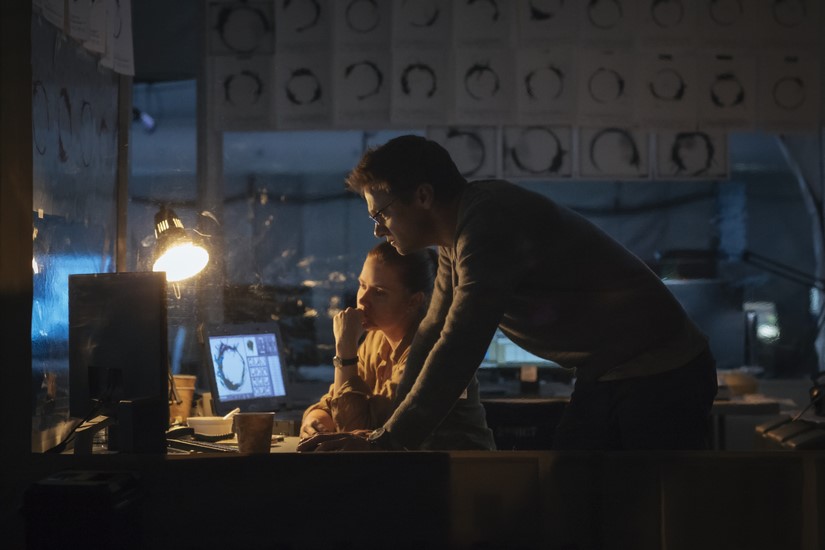
What were some of the challenges you faced during the mix?
SB: The biggest challenge was that we had an enormous amount of tracks. Bernard Strobl, who was the re-recording supervisor, he is amazing. He can drive the car and repair the engine. Sometimes re-recording mixers are really good on the board but technically, it can be such a challenge to deal with the board. We didn’t have a big board but we had tons of tracks. It was a huge challenge.
In terms of the most challenging scene to mix, beside the helicopter scene, we had two major scenes:
As I previously said, Louise is really our central character. She’s there in every shot. And she has this story that no one knows and she can’t share those things. There’s this lack of communication. So we wanted to follow her dimension. The first time we visit the alien vessel, the shell, we did so much work on that scene. We spent two days to mix five minutes. When she walks into it the first time, in her hazmat suit, the sound is through her perspective. There’s the sound of the fragment wind moving around the vessel. There was a certain mood there. That was really the most challenging scene, and the first visit to the shell was the flashback. It was challenging because it was very subtle. The way we played with the flashback was we took sound from the present and played that over a scene from the past. Or sometimes it was a sound from the past that would play over into the present. We’re not talking about big sounds; it was very subtle and that was very challenging to mix. The best one for me is the first one, when it goes almost to dead silence.
We took the sound of wind and we cut it really, really tight, into billions of little fragments, and then intercut those with fragments of wind that aren’t of the same nature
We did those scenes with natural sound, without pitching or processing. It was mostly subtle fader moves, with a little bit of EQ on the in and EQ on the out. We also used the sound of wind to represent a certain atmosphere surrounding the shell or part of that flashback sound. The wind is very subtle in the film but we did a lot of work with fraction wind. Olivier also was the main command on that field. We took the sound of wind and we cut it really, really tight, into billions of little fragments, and then intercut those with fragments of wind that aren’t of the same nature. So you have little fragments that jump into each other. Those are really low in the film.
BGS: Many scenes were quite challenging. Obviously, the first time they go out to the shell was an important one. There were many layers to understand: the military’s rigorous and insensitive approach, the overwhelming feeling of being completely out of our comfort zone, the fear and awe of the unknown… We wanted to have this overwhelming feeling of confusion that Louise is going through. The music was perfectly scored to let sound through and to play the awe of the scene. It was light enough to let us hear her breath and then powerful enough to match this incredible moment. As Louise is walking out of the tent, we hear all the outside activity going from natural sound to an inside POV of her breathing with the respirator and the outside sound is filtered by the suit. Denis liked it but he didn’t want us to be systematic about the effect so we just went with what had more feeling, softening the cuts and keeping it very fluid.
Also in this scene, we wanted to be able to focus on Ian and Louise’s experience of the imposing shell by creating pauses sometimes. But to create silence you need sounds to remove. The constant communication chatter was so great to play with during that scene, not only to create physical distance from the base, but also to emphasize moments by distancing them. There is a character in the expedition party that was brilliantly created in post, constantly reporting to the base camp, thus generating this precious audio material to color the scene.
There is a character in the expedition party that was brilliantly created in post, constantly reporting to the base camp, thus generating this precious audio material to color the scene
Another tricky mix part was to create the sounds of the shell moving. Sylvain and sound designer Olivier Calvert came up with great rock and ice sounds. It had the feeling that we were going for but it still sounded like rock and ice. I had to make it sound big enough that we would not think of rocks but more of the sound of interaction between the earth and a big UFO. Recently, I came upon a video of huge 30 to 40 foot rocks falling off of a mountain wall in Yosemite. I was amazed at how closely it matched what we had done.
Throughout the mix, my hopes were to keep us as closely linked to Louise as possible in the same way that shallow depth of field was used visually. I didn’t hesitate to kill everything around her or push in on subtle Foley sounds. This created some tricky moments when we had to go from a battle field to a calm quiet lakeside day.
Favorite scene to mix?
BGS: The arrival at the Montana base camp, and the first shell scene are on the top of my list. I love how the music, effects, and dialogue mix to add mood and depth to this scene.
I also love the first flashback that Louise experiences with the horse. It is night, outside the base camp, there is this emotionless voice dictating the decontamination procedure and water sprays washing the cars. We can almost see an army of robots going back to base in contrast with what she is exposed to — a very warm yet mysterious moment with a mother reassuring her daughter in front of a horse, just after she met the alien up close. The mood that the sound and music are creating is fantastic.
Where did you mix the film? What did you mix it on?
BGS: The film was mixed in Montréal at Mel’s Studios. Everything was kept in the box in Pro Tools, using two 32-fader Avid S6 consoles. Those controlled two HDX3 Pro Tools systems for dialogue and effects and a third HDX2 system with music and prints. The mix was in 7.1.
SB: The sound design was done in my studio and Olivier’s studio in Montréal, and the realistic sound editing was done at Mels in Montreal. The Foley was done in Paris at the Polyson studio, and at Yellow Cab Studios. Foley artists were Nicolas Becker (SFX) and Greg Vincent (traditional Foley). And the alien vocals were done by Dave Whitehead in New Zealand.
Any final thoughts you’d like to share on your experience on Arrival?
SB: Denis really wanted to create a mood, a vibe. Like music, the sound needed to create a vibe that makes the film cool to see. It’s a bit weird to say that but there’s a certain way that it was shot, and a certain look to the colorization, and the edit. There is a certain vibe that is presented visually that we needed to reflect with sound. Also, in a way, the main story of the film is how a human being is able to be strong enough to make it through an enormous disaster and to embrace life. How you can enjoy life and breathe it in — how in the end life is so much better than death. And this is the quest of life in a way: how to find happiness even if we know that death will come around the corner one day.
The Army base and the crowds were another thing I wanted to talk about. There are a lot of vocals for the crowds but we only recorded a bit of walla. We really used natural crowd recordings and so that took a lot of digging into libraries that we have. But the end result is really beautiful and I’m very happy with the sound of the voices in the military base. I’m very happy with the level of communication devices that we covered. There is this overarching theme of the difficulties of communication and I think we covered that well. Mathieu Beaudin did all the beautiful editing of the crowds besides being the main recorder of the devices with Patrik Rioux. Also the great work by the dialogue and ADR team in Montréal of Claire Pochon, Valery Dufort Boucher and Stan Sakell. Stan wrote little lines for the communication devices that we were able to spread all over the shell scenes. I cannot close without talking about Pierre Jules Audet and Mimi Allard, who worked intensively for 8 weeks editing all the naturalistic environments in the film, from fantastic alarms to regular helicopters. Pierre Jules’s strong sound supervisor experience was really helpful to us. And Mimi Allard was the patient SFX editor who spent hours rewriting the ink of the heptapods, carefully playing with sources from what we did in Paris. Sound on a film like Arrival is definitively a team sport. Every player is important.
And finally, Joe Walker: many levels of the sound design were brought about by Joe’s ideas. Beside the fact he is an immense editor, Joe is also a composer, so he has very good skill with sound. For the “draw flashback,” Joe used a beautiful sheet sound for the page turner. We tried to do other sheet sounds with Foley and effects but Joe’s sound was the best. He is also responsible for the magnificent bird he brought back in the nightmare with the big hepta foot. I call it the Cronenberg scene.
He also was really involved in the heptapod vocals. The voice on the P.A. before the first flashback has a completely psychedelic, cool vibe. It’s as if the P.A. voice pushes Louise into the flashback. That’s another one of Joe Walker’s marks, and there are more. He has all my admiration for what he has done.
 Tesla Model X 2015 electric full size crossover SUV sport utility vehicleKrampfstadt Studio65,00 $0,00 $100% OFF
Tesla Model X 2015 electric full size crossover SUV sport utility vehicleKrampfstadt Studio65,00 $0,00 $100% OFF



